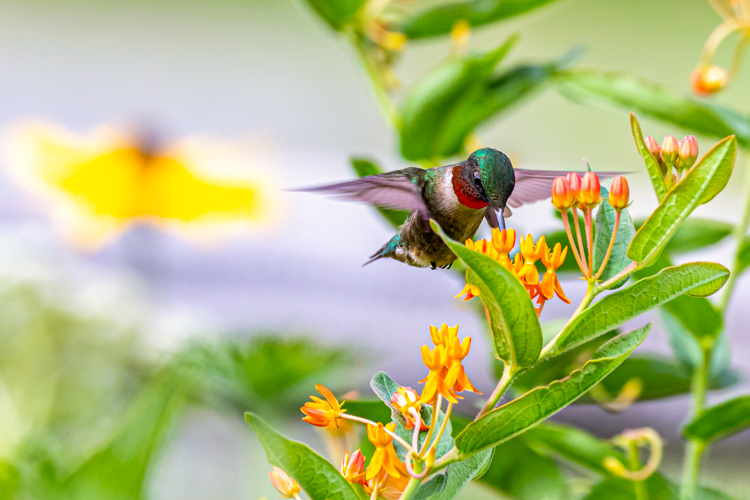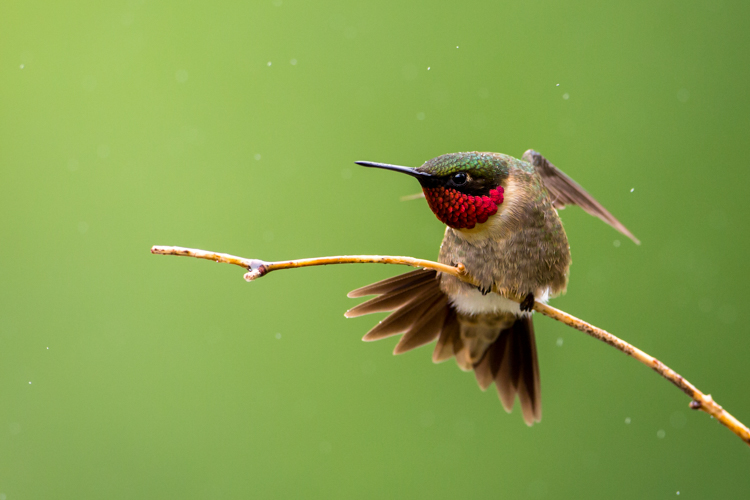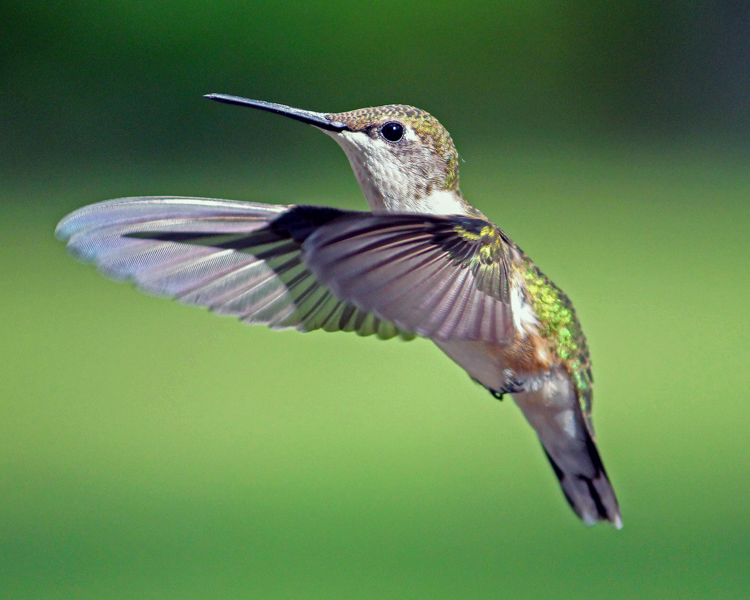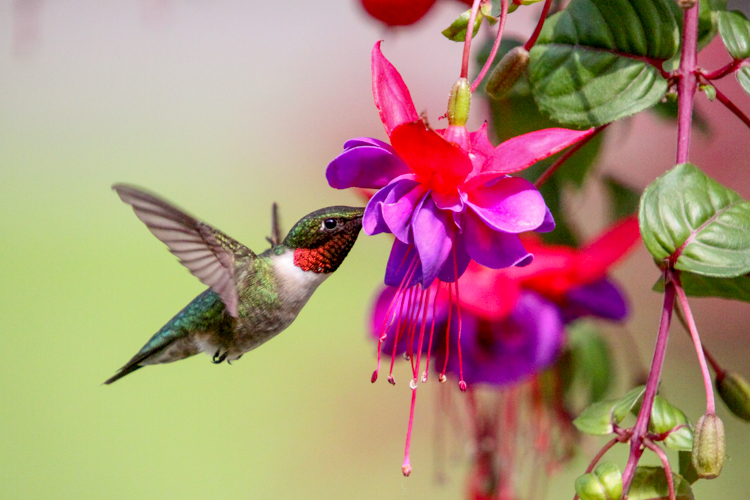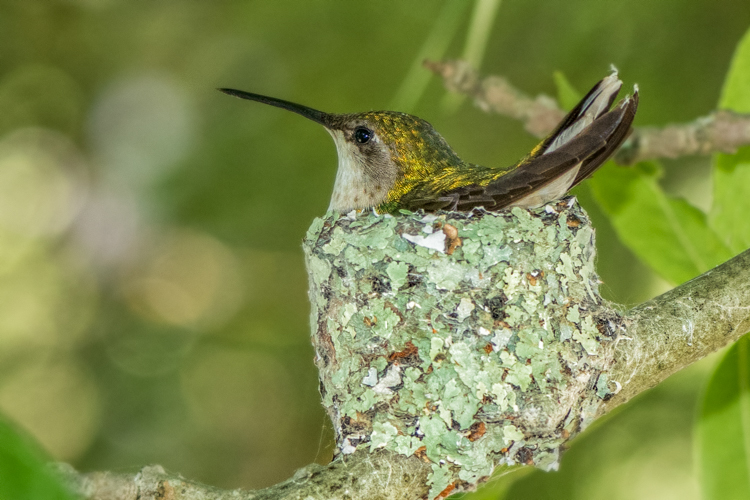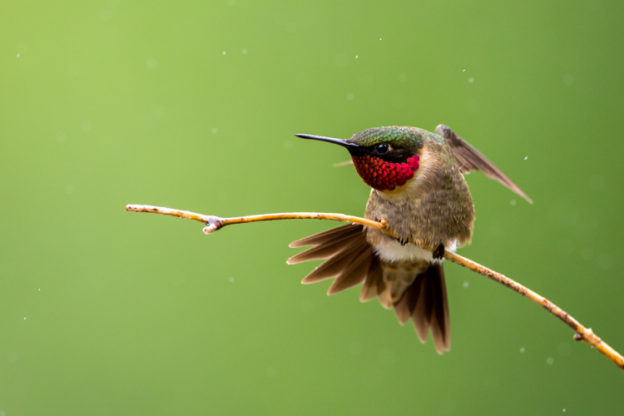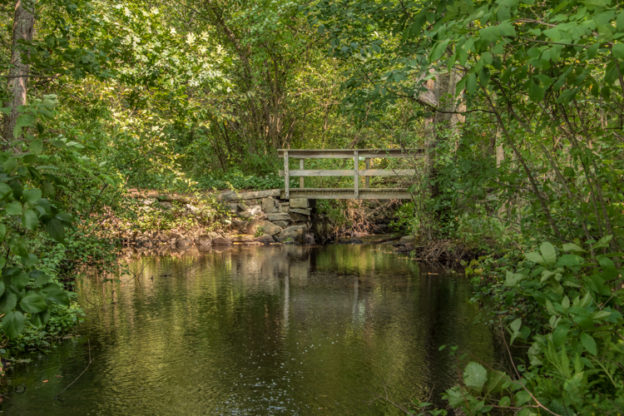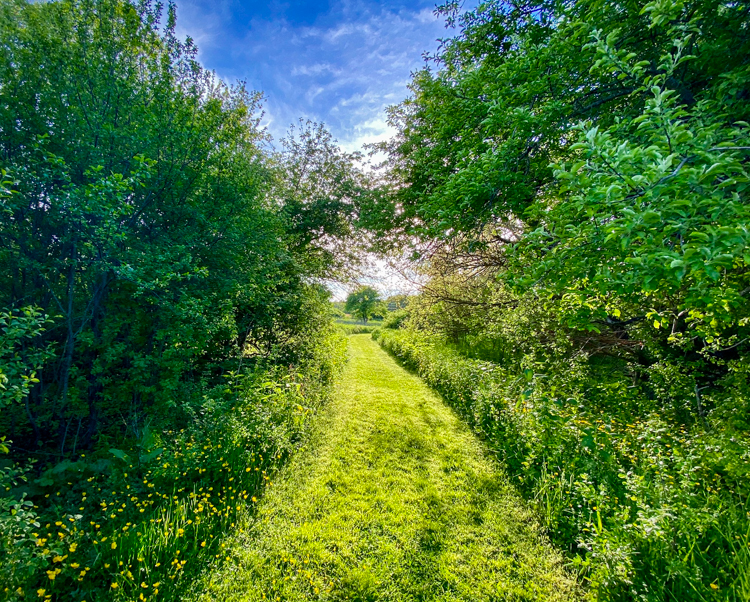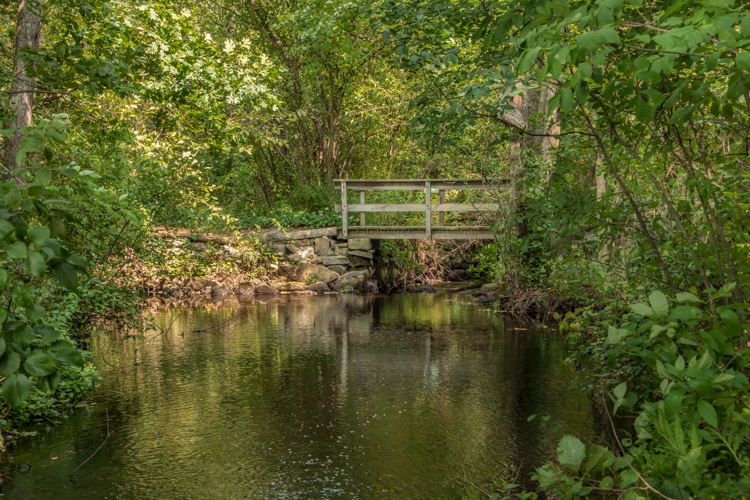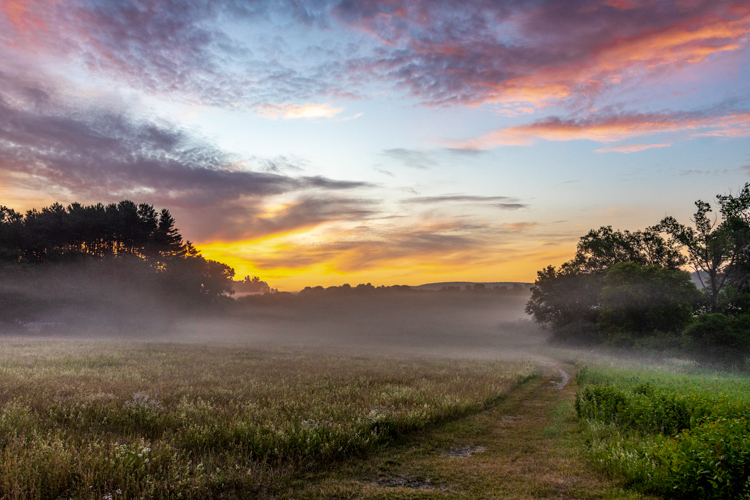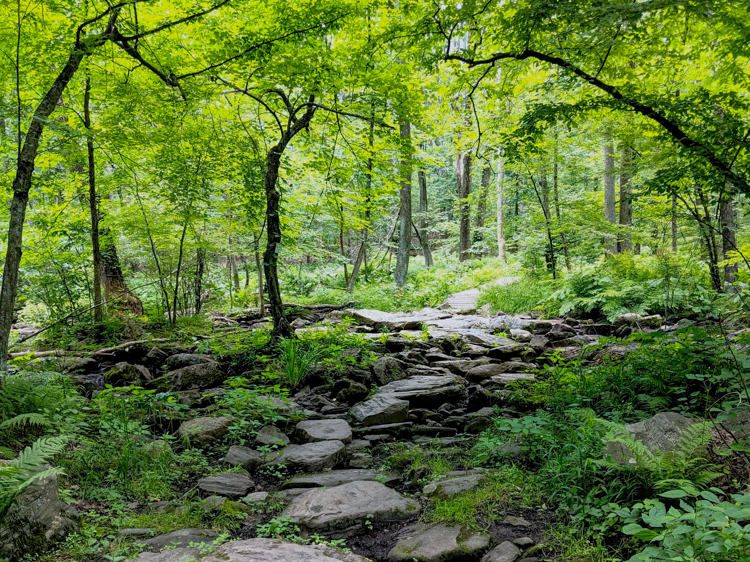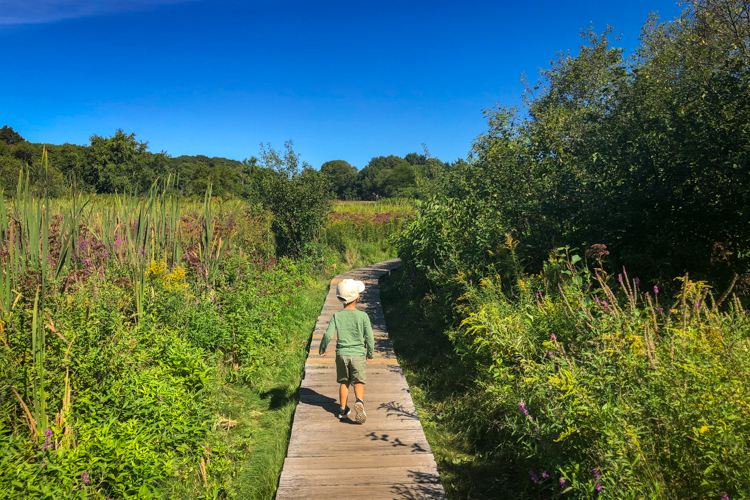Massachusetts’ smallest breeding bird is also one of our most beautiful. As their name describes, male Ruby-Throated Hummingbirds have glossy green feathers above and a stunning red gorget that glitters in the sun like their gemstone namesake. Though females and juveniles lack the bright scarlet throat of the males, they are still easily identified, for this species is the only hummingbird that commonly appears in Massachusetts.
Like tiny, buzzing, flying jewels, hummingbirds are a delight to watch as they dart swiftly from flower to flower in search of the nectar and insects they need to sustain their incredibly high metabolism—so high, in fact, that they must eat their own weight in nectar and insects every day to survive!
To help them meet their high caloric needs (and because they’re just so enjoyable to look at), nectar feeders are a popular addition to backyard and community ecosystems. With hummingbirds returning from their wintering grounds in late April and early May, if you plan on putting out a hummingbird feeder, this is the time to start.
If you’ve seen hummingbirds return to your neighborhood already this spring, let us know! Get answers to some of the most frequently asked hummingbird questions on our website, and enjoy these five gorgeous photos of hummingbirds from our annual Picture This: Your Great Outdoors photo contest.
